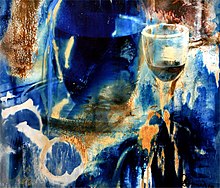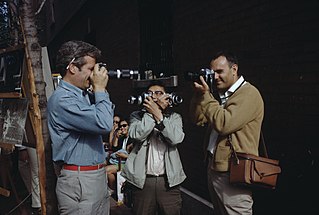
Photography is the art, application, and practice of creating images by recording light, either electronically by means of an image sensor, or chemically by means of a light-sensitive material such as photographic film. It is employed in many fields of science, manufacturing, and business, as well as its more direct uses for art, film and video production, recreational purposes, hobby, and mass communication.
The following list comprises significant milestones in the development of photography technology.

The albumen print, also called albumen silver print, is a method of producing a photographic print using egg whites. Published in January 1847 by Louis Désiré Blanquart-Evrard, it was the first commercial process of producing a photo on a paper base from a negative, previous methods - such as the daguerreotype and the tintype - having been printed on metal. It became the dominant form of photographic positives from 1855 to the start of the 20th century, with a peak in the 1860–90 period. During the mid-19th century, the carte de visite became one of the more popular uses of the albumen method. In the 19th century, E. & H. T. Anthony & Company were the largest makers and distributors of albumen photographic prints and paper in the United States.

The Sabatier effect, also known as pseudo-solarization and erroneously referred to as the Sabattier effect, is a phenomenon in photography in which the image recorded on a negative or on a photographic print is wholly or partially reversed in tone. Dark areas appear light or light areas appear dark. Solarization and pseudo-solarization are quite distinct effects. Over time, the "pseudo" has been dropped in many photographic darkroom circles and discussions, but the effect that is meant is the Sabattier effect and not the solarization by extreme overexposure.

A photogram is a photographic image made without a camera by placing objects directly onto the surface of a light-sensitive material such as photographic paper and then exposing it to light.

Heliography from helios, meaning "sun", and graphein (γράφειν), "writing") is the photographic process invented, and named thus, by Joseph Nicéphore Niépce around 1822, which he used to make the earliest known surviving photograph from nature, View from the Window at Le Gras, and the first realisation of photoresist as means to reproduce artworks through inventions of photolithography and photogravure.
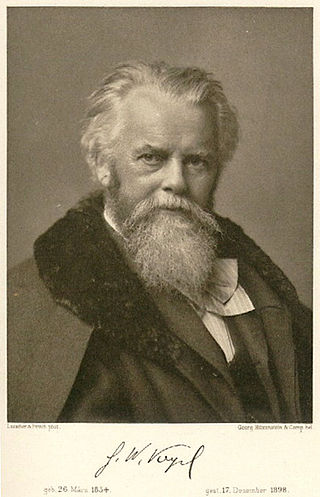
Hermann Wilhelm Vogel was a German photochemist and photographer who discovered dye sensitization, which is of great importance to photography.

Fine-art photography is photography created in line with the vision of the photographer as artist, using photography as a medium for creative expression. The goal of fine-art photography is to express an idea, a message, or an emotion. This stands in contrast to representational photography, such as photojournalism, which provides a documentary visual account of specific subjects and events, literally representing objective reality rather than the subjective intent of the photographer; and commercial photography, the primary focus of which is to advertise products or services.

Harman Technology Limited, trading as Ilford Photo, is a UK-based manufacturer of photographic materials known worldwide for its Ilford branded black-and-white film, papers and chemicals and other analog photography supplies. Historically it also published the Ilford Manual of Photography, a comprehensive manual of everything photographic, including the optics, physics and chemistry of photography, along with recipes for many developers.
A chromogenic print, also known as a C-print or C-type print, a silver halide print, or a dye coupler print, is a photographic print made from a color negative, transparency or digital image, and developed using a chromogenic process. They are composed of three layers of gelatin, each containing an emulsion of silver halide, which is used as a light-sensitive material, and a different dye coupler of subtractive color which together, when developed, form a full-color image.
The following outline is provided as an overview of and topical guide to photography:

Analog photography, also known as film photography, is a term usually applied to photography that uses chemical processes to capture an image, typically on paper, film or a hard plate. These processes were the only methods available to photographers for more than a century prior to the invention of digital photography, which uses electronic sensors to record images to digital media. Analog electronic photography was sometimes used in the late 20th century but soon died out.

Emanuel Goldberg was an Israeli physicist and inventor. He was born in Moscow and moved first to Germany and later to Israel. He described himself as "a chemist by learning, physicist by calling, and a mechanic by birth." He contributed a wide range of theoretic and practical advances relating to light and media and was the founding head of Zeiss Ikon, the famous photographic products company in Dresden, Germany. His inventions include microdots, the Kinamo movie camera, the Contax 35 mm camera, a very early search engine, and equipment for sensitometry.
Harald Mante, German photographer, artist, and designer. Since 1960 Mante had a great influence on the German color photography. He was in second generation a Bauhaus student and transformed the ideas of the famous masters of the Bauhaus into photography. His text books on composition and color design are known worldwide.

Pedro J. Déniz Acosta is a Spanish interdisciplinary artist who has developed art projects and experiences ranging from the objectual art to installation art, from art photography to video art, cultivating art intervention, performance art, visual poetry and graphic design.
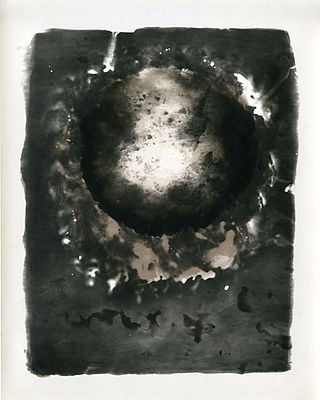
A chemigram is an experimental piece of art where an image is made by painting with chemicals on light-sensitive paper.
Edmund Kesting was a German photographer, painter and art professor.
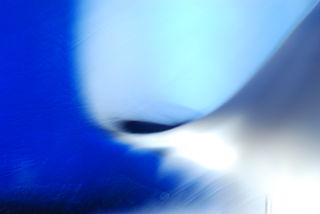
Abstract photography, sometimes called non-objective, experimental or conceptual photography, is a means of depicting a visual image that does not have an immediate association with the object world and that has been created through the use of photographic equipment, processes or materials. An abstract photograph may isolate a fragment of a natural scene to remove its inherent context from the viewer, it may be purposely staged to create a seemingly unreal appearance from real objects, or it may involve the use of color, light, shadow, texture, shape and/or form to convey a feeling, sensation or impression. The image may be produced using traditional photographic equipment like a camera, darkroom or computer, or it may be created without using a camera by directly manipulating film, paper or other photographic media, including digital presentations.
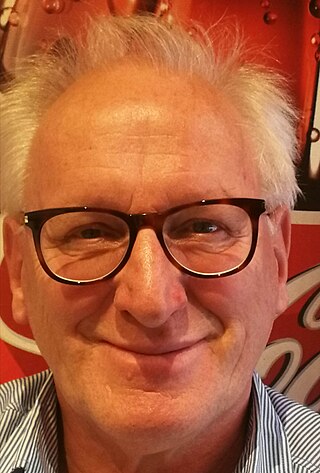
Josef H. Neumann is a German Art Photographer, media designer and art historian. He invented the chemogram, an experimental artform involving manipulating chemicals in film photography.
